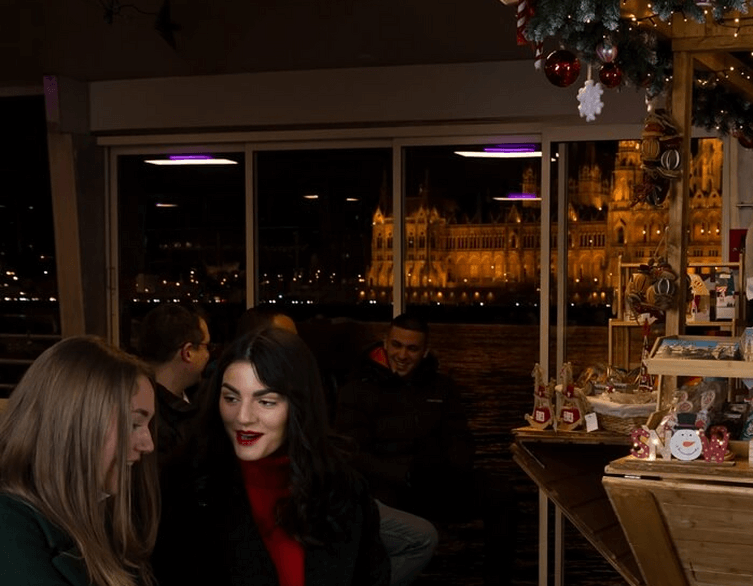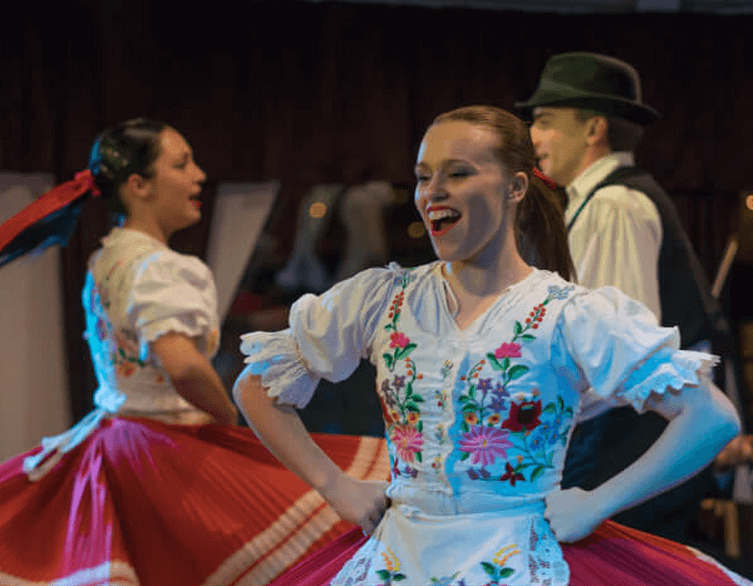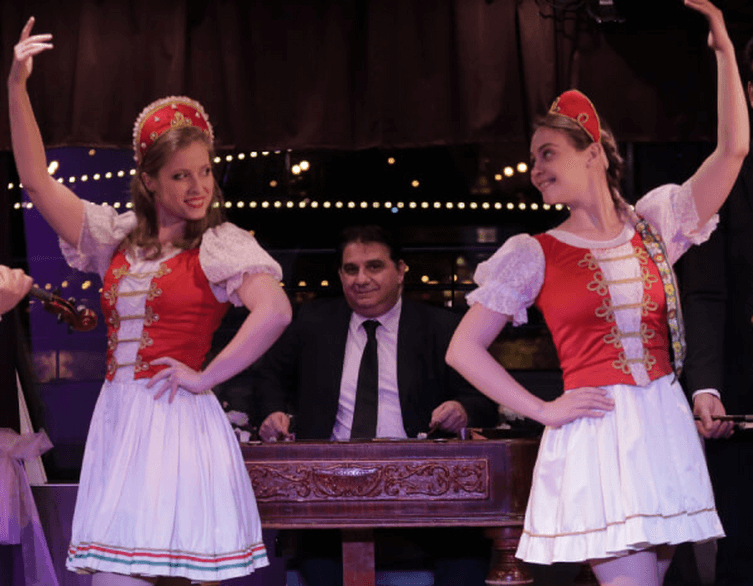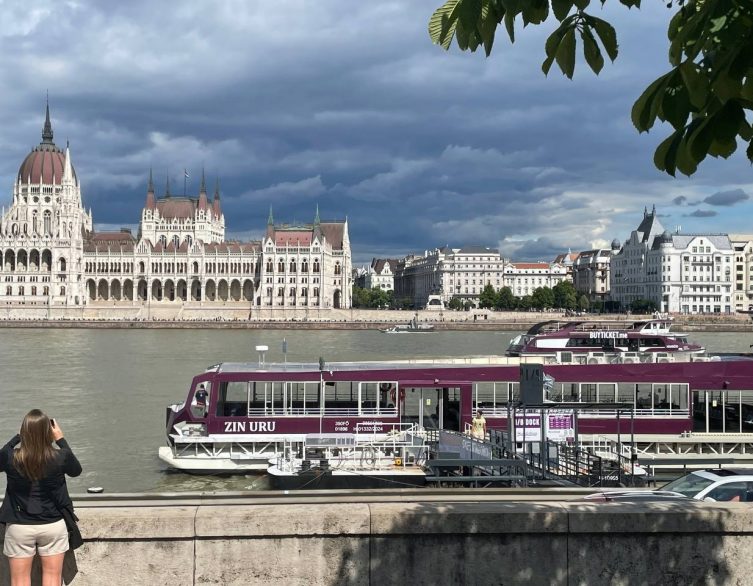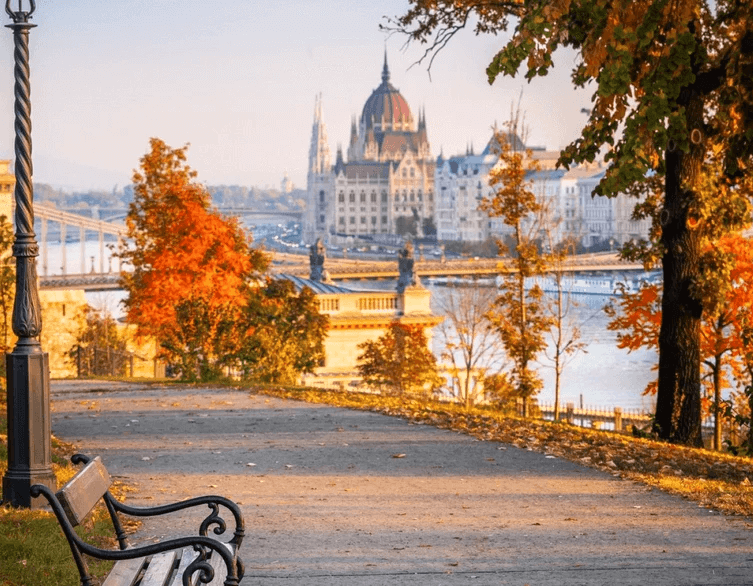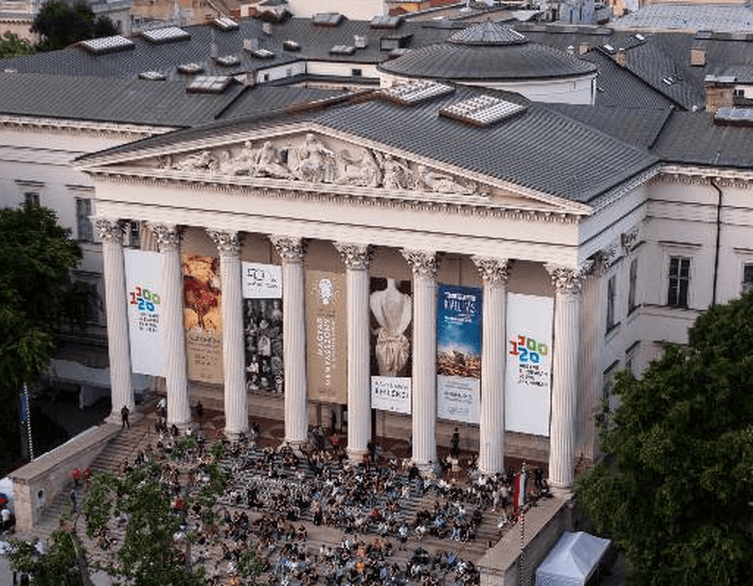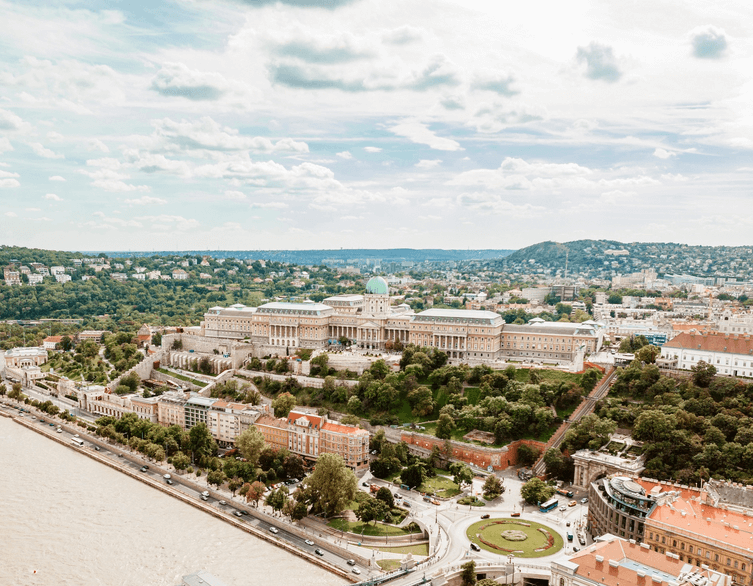The Hungarian National Gallery in Budapest

Nestled within the historic Buda Castle in Budapest, the Hungarian National Gallery is a treasure trove of Hungarian art, showcasing the country’s rich artistic heritage from the Middle Ages to the present day. As a foreign tourist visiting Hungary, this museum is an essential stop on your itinerary to gain a deeper understanding and appreciation of the nation’s cultural identity.
Historical Significance
The Hungarian National Gallery, established in 1957, is the largest public collection documenting and presenting the development of fine arts in Hungary. It is located in the historic Buda Castle, which dates back to the 14th century and has been the residence of Hungarian kings, including Louis the Great, Sigismund, and Matthias Corvinus. The castle has witnessed significant historical events, such as the Turkish occupation in 1541 and the Battle of Buda in 1686.
The gallery’s home, the former Royal Palace of Buda, adds to its historical importance. The palace dates back to the 14th century, serving as a magnificent royal residence for kings such as Louis the Great, Sigismund, and Matthias Corvinus. Despite suffering damage during the Turkish occupation in the 16th century and the Battle of Buda in 1686, the palace was restored in the Baroque style during the reign of Queen Maria Theresa in the 18th century. The building was further expanded in the 19th century, becoming a symbol of Hungary’s rich history and cultural heritage.
When the Hungarian National Gallery moved to the Royal Palace in 1975, it not only found a fitting home for its extensive collections but also helped to preserve and showcase the palace’s historical significance. Visitors to the gallery can explore the history of Hungarian art while also experiencing the grandeur of the former royal residence.
One of the most fascinating features of the gallery is the Habsburg Palatine Crypt, located beneath the building. This crypt holds the remains of Archduke Joseph, Palatine of Hungary, and his family members. The crypt, with its stunning sculptures and ornate decorations, offers a glimpse into the lives of the Hungarian nobility and their role in shaping the country’s history.
For those visiting Hungary, the Hungarian National Gallery provides an unparalleled opportunity to delve into the nation’s rich artistic and cultural heritage. The gallery’s historical setting, combined with its extensive collections, makes it a must-see destination for anyone interested in exploring the fascinating history of Hungary and its contributions to the world of art.
Architectural Significance
The Hungarian National Gallery, located in the historic Buda Castle in Budapest, is a significant architectural landmark that attracts many foreign tourists visiting Hungary. The gallery is housed in the former Royal Palace, which has a rich history dating back to the 14th century. The palace has undergone several transformations over the centuries, reflecting the changing architectural styles and the turbulent history of Hungary.
Best deals of Budapest
The original Gothic palace was built during the reign of King Louis the Great, Sigismund, and Matthias Corvinus. However, the palace was severely damaged during the Turkish occupation in the 16th century and the Battle of Buda in 1686. In the 18th century, during the reign of Queen Maria Theresa, the palace was restored in the Baroque style, which was fashionable at the time.
At the end of the 19th century, the palace underwent a major expansion and renovation, led by architects Miklós Ybl and Alajos Hauszmann. They added a new wing to the palace and incorporated neo-Baroque elements into the design, creating a grand and opulent architectural ensemble that showcased the power and wealth of the Austro-Hungarian Empire.
During World War II, the palace suffered extensive damage once again. The reconstruction began in the 1960s, and in 1975, the Hungarian National Gallery moved into the renovated Royal Palace.
One of the most striking features of the Hungarian National Gallery is the iconic dome, which offers breathtaking panoramic views of Budapest. Visitors can climb to the top of the dome and enjoy the stunning vistas of the Danube River, the Hungarian Parliament Building, and the city skyline.
The architectural significance of the Hungarian National Gallery lies not only in its exterior grandeur but also in its interior spaces. The gallery houses an impressive collection of Hungarian art, spanning from the Middle Ages to the present day. The exhibitions are displayed in beautifully restored halls and chambers, which showcase the architectural elements of different historical periods, such as Gothic, Renaissance, and Baroque.
Another notable architectural feature of the gallery is the Habsburg Palatine Crypt, located beneath the former palace chapel. The crypt is the final resting place of Archduke Joseph, Palatine of Hungary, and his family members. The crypt is adorned with stunning sculptures and ornate decorations, providing a glimpse into the opulent burial traditions of the Habsburg dynasty.
Exhibitions
The Hungarian National Gallery boasts an extensive collection of over 100,000 artworks, spanning from the 11th century to the present day. The museum’s permanent exhibitions showcase medieval and Renaissance stone carvings, late Gothic winged altarpieces, panel paintings, wooden sculptures, and Baroque art. Visitors can also explore the works of renowned Hungarian artists such as Mihály Munkácsy, László Paál, and Károly Ferenczy. The gallery offers guided tours, a museum shop, a café, and accessibility services for disabled visitors.
Spanning across four buildings (B, C, D, and A) within the castle complex, the Hungarian National Gallery boasts an impressive array of artworks, including over 6,000 paintings, 2,100 sculptures, 3,100 medals, 11,000 drawings, and 5,000 prints. The museum’s permanent exhibitions take you on a journey through the evolution of Hungarian art, from medieval panel paintings and wooden sculptures to baroque masterpieces and contemporary installations.
Programs
The Hungarian National Gallery in Budapest offers a wealth of programs and experiences for visitors to immerse themselves in Hungarian art and culture. As the largest public collection presenting the development of fine arts in Hungary, the gallery provides engaging ways to discover works spanning from the 11th century to the present day.
One of the highlights is the opportunity to visit the characteristic Dome of the Buda Palace, the highest point offering unparalleled panoramic views over the city. Visitors can access the Dome with a ticket to the permanent or temporary exhibitions and take in the breathtaking vistas.
The gallery’s permanent exhibitions showcase masterpieces of Hungarian art through the ages. Guided tours led by the museum’s professional art historians allow visitors to gain deeper insights into selected works and the broader artistic movements they represent. Tours are available in English, French, Italian and German and can be booked in advance.
Special exhibitions rotate throughout the year, presenting focused collections or featured Hungarian artists. The gallery hosts regular thematic programs that combine art appreciation with music performances and even wine tastings, such as the popular summertime “Wine Wednesdays” event.
For a unique glimpse into history, visitors can explore the Habsburg Palatine Crypt located underneath the museum. The crypt contains the burial place of Archduke Joseph, Palatine of Hungary in the early 19th century, and his family. Guided visits to the ornate crypt can be arranged in advance.
Whether you join a guided tour for an expert-led art discovery, attend a special exhibition or musical performance, take in the vistas from the Dome, or explore the Palatine Crypt, the Hungarian National Gallery offers enriching cultural experiences that will enhance any visit to Budapest. Be sure to check their schedule and plan ahead to make the most of the programs during your stay.
Available Services
The Hungarian National Gallery, located in the historic Buda Castle in Budapest, offers a range of services and amenities to enhance the experience of foreign visitors exploring Hungary’s rich artistic heritage:
- Guided Tours: Professional guides fluent in English, French, Italian, and German are available to lead tours through the permanent and temporary exhibitions. These informative 60-minute tours, accommodating up to 17 people, provide valuable insights into the artworks and the history of Hungarian art. Bookings must be made at least two weeks in advance through the Museum Education Department.
- Audio Guides: For a self-guided experience, visitors can rent audio guides in English, French, Italian, and German to explore the gallery at their own pace.
- Accessibility: The gallery provides level access for disabled visitors in Building B, and level access elevators are available in Building C.
- Family Amenities: The gallery offers a comfortable family room for parents with babies, equipped with a rocking chair, diaper changing facilities, and toys. Strollers and wheelchairs are available for free, and changing tables are located in several restrooms.
- Café: Visitors can relax and refuel at the cozy café on the ground floor of Building C, which serves a variety of hot and cold beverages, cakes, pastries, and sandwiches.
- Museum Shop: The MúzeumShop, accessible without an entrance ticket, offers a selection of art-related souvenirs, books, and gifts.
By providing these services and amenities, the Hungarian National Gallery ensures that foreign visitors have a comfortable, informative, and memorable experience while exploring Hungary’s artistic treasures.
Rules for Visitors
To ensure an enjoyable and safe experience for all visitors, please respect the following rules during your visit:
Prohibited Items
- Vehicles such as bicycles, scooters, and segways are not permitted inside the building.
- Animals are not allowed, with the exception of guide dogs.
- Sharp objects, hazardous materials, or anything that may pose a safety risk are prohibited.
Visitor Conduct
- Persons under the influence of alcohol, intoxicants or stimulants will not be admitted.
- Visitors must wear appropriate clothing. Bare feet and bathing suits are not permitted.
- Sitting on windowsills in the exhibition halls is prohibited.
- Security guards will take measures against anyone endangering or threatening visitors or staff.
Protecting the Artworks
- Please keep a distance of at least 30 cm from all artworks and do not touch them, including stonework. Even mild touching can cause damage.
- For safety reasons, use of the cloakroom is mandatory and free of charge. Bags exceeding 30 x 25 x 15 cm must be left there.
Photography & Video
- Photography and video recording are allowed for personal use only with any admission ticket.
Other Guidelines
- Cell phones should be muted. Please avoid calls while in the exhibitions.
- Smoking, including e-cigarettes, is only permitted outside in designated areas at least 5m from entrances.
- Children under 14 must be supervised by an adult at all times. Strollers are permitted.
Getting There
The Hungarian National Gallery is easily accessible by public transportation. Visitors can take bus 16 or 16A from Széll Kálmán Square to Dísz Square or bus 105 from Deák Ferenc Square to Clark Ádám Square. Alternatively, visitors can walk from the Danube bank via the King’s Stairs or take the Funicular Railway from Clark Ádám Square. The Castle Garden Bazaar (Várkert Bazár) and the Tabán elevators from Palota Street also provide access to the castle.
The main entrance to the permanent and temporary exhibitions is in Building C of the Buda Castle complex. Wheelchair access is available in Building B via a ramp. Parking is available at Dózsa György Square for those arriving by car.
Nearby Attractions
The Hungarian National Gallery, located in the heart of Budapest, is surrounded by a wealth of captivating attractions. Just a short stroll away, visitors can marvel at the stunning architecture of the Buda Castle, a UNESCO World Heritage Site that offers breathtaking views of the Danube River and the city skyline. The nearby St. Matthias Church, with its intricate Gothic design and colorful tiled roof, is another must-see landmark. For those seeking a moment of tranquility, the serene Fisherman’s Bastion provides a perfect spot to relax and soak in the panoramic vistas of Budapest. History enthusiasts will delight in exploring the Hospital in the Rock Nuclear Bunker Museum, which offers a fascinating glimpse into the city’s past during times of war and conflict. With so much to discover in the vicinity of the Hungarian National Gallery, visitors are sure to have an unforgettable experience in this enchanting part of Budapest.
Summary
The Hungarian National Gallery offers a fascinating journey through Hungary’s rich artistic heritage, set within the historic and architectural splendor of Buda Castle. Its extensive collections, engaging exhibitions, and convenient location make it a must-visit destination for art enthusiasts and tourists alike.
Related news
Related events

